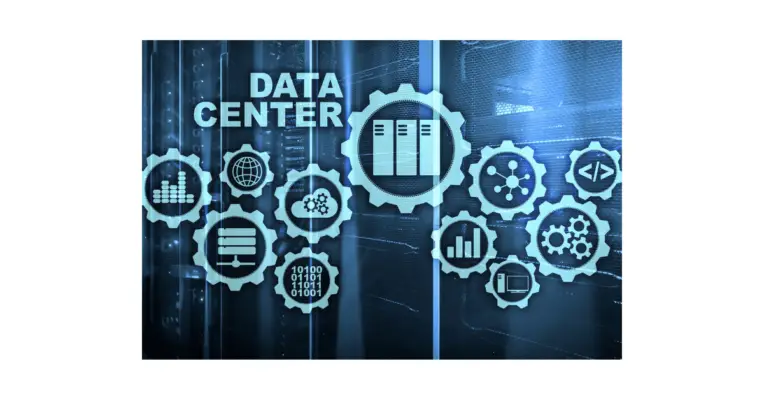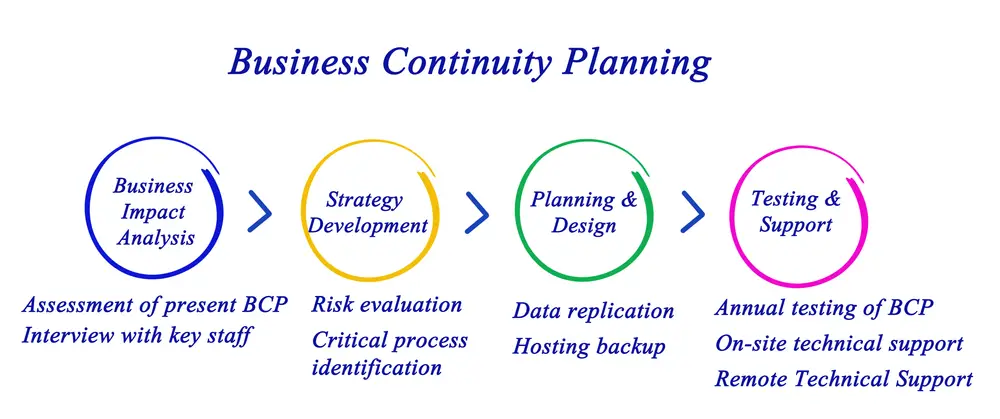Enterprise Business continuity planning is no longer a “nice to have” – it’s now a necessity for businesses of all sizes. With the COVID-19 pandemic forcing many companies to rapidly adapt their operations, it’s clear that traditional approaches to business continuity are no longer sufficient.
Businesses need to rethink their enterprise continuity plans from the ground up, taking into account new risks and challenges posed by the current environment. In this blog post, we’ll explore some of the key ways businesses need to adapt their continuity plans in order to stay ahead of the curve.
In an ideal world, the business continuity plan only needs to be used once. A disaster hits, and you have a way of recovering from it quickly. Maybe this means that there is redundancy in your operations or perhaps you use some type of backup system to allow for continued work while minimizing downtime. Either way, if everything goes according to plan then the business continuity plan isn’t needed at all.
But when things don’t go as planned, businesses need a reliable strategy in place that will keep them up and running no matter what happens so they can continue performing their day-to-day functions uninterrupted. After all, it doesn’t matter how great your product is if people can never find out about it because your
A new report focuses on how resilience and adaptability are important when dealing with disruptions. The traditional focus on Continual Business Operations is the possibility that things will go bad. Network Operations Centers lose energy. A quake, flooding disaster shuts down offices within a specific region. Criminal acts or armed acts destroy neighborhoods or cities. The majority of solutions focus on redundant system failure and worker recovery.
Sometimes, the owner of a company gets very worried about the consequences of a company’s failing network if a disaster occurs. So much of today’s business environment has become digital and losing it can cause serious losses.
Gartner reports the average organization pays $400,000 an hour for network downtime. In addition, extended downtime may affect your photos irreparably. A business plan is increasingly vital. Thinking about that can seem overwhelming for some administrators, but thinking about and planning for the worst will ensure that you remain secure if there will be a major emergency.
Approach enterprise BCP with a focus on prevention. You should have assessed the risks that could impact your business and created a response plan to address them. You also need to have tested these plans regularly. If you haven’t done this, now is the time to start.
Major disruption can also affect employees. They may not be able to get to the office, or they may be working from home and the network goes down. Make sure you have a solid communication plan in place for this type of disaster.
Business continuity is a critical component of any business. Nonetheless, most professionals haven’t fully learned how the system was implemented. The guide covers an overview and hints on creating an efficient business continuity strategy.
Most people within businesses understand that continuity planning is important, but they don’t always know how to go about it. The lack of understanding often leads to gaps in business continuity plans and can place organizations at risk.
According to the firms, each hour the average worker needs is about $300,000. A long-lasting incident could damage a business irreparably. The plan is essential now. Can we prepare for the upcoming COVID 19 pandemic? Having good planning for disaster is essential for survival.
Enterprise business continuity planning is the process of creating a plan for how a business will continue operations if it’s interrupted by an unexpected event. This can include things like natural disasters, power outages, or pandemics.
A disaster recovery plan is a subset of continuity planning that focuses specifically on how a business will recover from a major incident, such as a data breach or ransomware attack.
In order for businesses to adequately protect themselves against these types of events, they need to rethink their enterprise business continuity plans. This means creating plans that are tailored to their specific needs and ensuring that all
Organizational resilience is key to surviving a disruptive event. One of the most important aspects of organizational resilience is having a business continuity plan in place. A continuity plan outlines how a business will respond to a disruptive event, such as a natural disaster or cyberattack. By having a plan in place, businesses can minimize the impact that these events have on their operations.
Business Continuity Management
Typically, the term “risk management activity” is defined as the management of risks such as earthquakes and tsunamis as well as floods or fires. The goal of this initiative is to minimize disruptions to organizational work during hectic hours, which would result in major financial losses. It’s an effort to maintain stability in an emergency. An essential element in all plans is an emergency plan, which determines the correct way of communicating, restoring connectivity, and maintaining the equipment to prevent re-occurring from causing damage by a breach of security.
The four key dimensions that businesses should consider when developing an emergency plan are people, process, technology, and facilities. The people dimension includes the crisis management team and its roles and responsibilities. The process dimension is the critical step that must take place during an emergency. The technology dimension covers restoring communication and maintaining equipment. The last dimension is facility planning, which should take into account the layout of the office, backup power, and water.
Uninterrupted connectivity is essential to businesses. In order to maintain a secure connection, businesses need to have a plan that addresses how they will maintain communication during an emergency. This can include redundant systems and off-site storage of information. Backups are also critical in order to ensure that data is not lost in the event of an emergency.
Another important part of continuity planning is ensuring that employees are aware of the plan and its roles in it. Employees should also be aware of what to do in the event of an emergency. This includes knowing where to go and what to do when an emergency occurs.
Many organizations hold drills to help employees become familiar with the plan and how to respond. Drills can also help identify any areas that may need improvement. Disruptive incident response planning is also important. This type of planning helps businesses prepare for and respond to incidents that may disrupt their normal operations.
Disruptive incidents can include natural disasters, power outages, and cyberattacks. Businesses should have a plan in place for how they will respond to these types of incidents. common gaps in business continuity planning include:
- Lack of resources to support the disaster recovery plan.
- Lack of a formal plan or procedures.
- Lacking knowledge or awareness about the plan.
- Inability to test and validate the plan.
- Timely communication among team members
Data loss in a disaster such an event time happens to information technology infrastructure and systems, employee files, client lists, and other important information. Understanding these gaps are essential to creating a comprehensive BC plan for your business.
Business Continuity Planning
Business continuity is deemed to be “the capability of an organization ensuring that products or services remain available at an appropriate level following an incident. It also aims primarily at providing ongoing operations before a disaster recovery operation and during the recovery phase of the recovery. Business continuity is expected to be achieved through effective business continuity management. The disaster recovery operation is expected to restore the organization to its pre-disaster state.
However, studies have shown that many businesses do not have effective business continuity plans in place. Many organizations only focus on their disaster recovery plans and do not give sufficient attention to their business continuity plans.

Anatomy of a business continuity plan
When assessing your business processes first, you must determine the system functions. The next steps in planning should include determining possible losses during shutdowns. As you prepare your strategy you should interview senior executives and managers to ensure that your business is successful. DR plans involve the development of a strategy for the task during a crisis and are important for you. DR plans need consideration of all this in their entirety.
Common Gaps in Enterprise Business Continuity Plans
The businesses are transforming. Different components can impact change, creating opportunities for improvement and promoting growth. When preparing an enterprise continuity plan this moving part should reflect the change. This is important. The changes that occur in BCPs must be examined annually. However, even after review, some businesses ignore the commonest gap in their bcps which may result in large losses.
The first step in reducing the impact of a disaster is having a well-defined business continuity plan (BCP). Most businesses understand this and have some form of a continuity plan in place. The problem is that many companies do not revisit their continuity plans on a regular basis to ensure that they are still aligned with the company’s current business goals and objectives. Nor do they test their plans to ensure that they will actually work in a real-world disaster scenario.

Setting Up A Business Continuity Response Team
In most instances, the business continuity/ disaster recovery team will need to provide dependable services. The biggest reason for continued downtime is panic. In an emergency situation, no one can actually get involved and simply expect that someone else will take care of it unless a crisis occurs. Therefore, the need for an immediate response team is simple. Regardless of what happens during downtime, the job is determined by each employee, and specific assignments to tasks will assure everyone that they understand the job.
The team should be composed of individuals who can work effectively and efficiently under pressure. This usually means that the team should be relatively small in order to maintain communication and coordination. The team leader must be someone with crisis management experience, preferably from within the company. A solid plan of virtual onboarding can be an important consideration to act quickly in times of remote work.
Changing Corporate Culture
Corporate Culture has a significant and sometimes ignored element that contributes to business resilience. Previously, COVID-19 has been popular with more digitally savvy millennials and Gen Xers entering the workforce. But corporate leaders remained keen on physical presence at their headquarters. Many employers feel they have no creativity or productivity at home. Some consider human behavior a natural reaction if it is not monitored by managers. The sentiments are not supported by stats, but they are likely to be inverse. In the short term, a pandemic will have an impact on work-from-home policies.
The percentage of people working remotely has slowly increased over the years with technology improvements and a cultural shift to acceptance. In fact, a study by Global Workplace Analytics reported that in 2017, 3.3 million employees, or 2.9% of the US workforce, worked from home at least half the time. That number is expected to grow to 5.3 million employees by 2020.
A study by The New York Times found that when working remotely, employees have a 13% higher productivity rate and are less likely to take sick days. This is especially true for knowledge workers who can easily do their jobs from anywhere.
Backup Is A Must
A good disaster recovery strategy is based on data storage and data recovery software. In an event of a downfall event, the data is likely to be lost and you have the information stored in an easy-to-access location. However, it is not enough simply to download company information to external hard disks to be saved.
Downtime can often occur on large quantities of data and requires emergency backup solutions. All documents in a document must have two copies. These files must be stored in the cloud. Finally is safeguarding your data from any loss if something damages your business infrastructure. A copy of a file may serve as a backup to your office computer.
You should follow 3 Backup Rules for Data Safety. It requires that each file must be copied 3 times on more than one medium such as a physical disk.
1st Rule:
When you save a new copy of a file, always save it in at least 2 different places. For example, save it to your computer and an external hard drive.
2nd Rule:
Whenever you make changes to a file, save the original and the revised version in at least 2 different places.
3rd Rule:
Delete old copies of files that you no longer need.
By following these 3 simple rules, you can help ensure the safety of your data in the event of a disaster. And, if you do experience a data loss incident, having a good backup and data recovery plan in place will help minimize the loss.

Rethink Your Definition of Disaster
When people think of disasters, they usually imagine massive natural disasters such as tornados and blizzards. This is certainly one possibility that should be addressed, but that’s not everyone’s concern. You need a big paycheck that you pay someone else. A survey conducted by Veriflow finds employees causing problems is one of the leading causes of downtime for businesses across all industries. Statistics have worsened inside a data center. The Ponemon Institute reports that the average number of minutes of unplanned downtime per incident increased from 188 minutes to 219 minutes from 2016 to 2017. The cost of an outage also increased, from $5,600 per minute in 2016 to $6,100 per minute in 2017.
Pushing People and Process Resiliency
Vigorous process resilience is also important in continuity strategies. During the process, employees adhere to a number of policies that apply to the security and human resource functions of the company, including the security and human resources department. Resiliency in processes should be achieved by providing employees with the same comfort and assistance systems as in the physical workplace environment.
Building resiliency into your people and process is essential for continuity planning. By having a well-defined plan and following it closely, you can minimize the risk of any significant interruptions to your business. Remember to keep your employees informed of any changes or updates to the plan, and be sure to test your processes regularly to ensure they are effective.
Potential threats to your business can come from a variety of sources, so it is important to have a well-rounded continuity plan that addresses all potential risks. By ensuring that your people and process are resilient, you can rest assured that your business will be able to withstand even the most challenging disruptions.
A company’s plan on business continuity is the key to protecting it from unforeseen disasters that could cripple its day-to-day operations. Disasters can be manmade or natural and can have a significant impact on a company’s ability to operate.
Digital transformation is essential to protect the company company’s operation and minimize losses.key dimensions of digital transformation will be in the form of the BCP system.
Owning Operations
Organizations understand very well how essential operational resilience is for survival, thereby increasing the focus on critical systems in the context of COVID19. Analysts say that companies must find alternative ways to work, without requiring physical office space to meet deadlines to meet their needs. “It’s important that we are able to keep our business running unattended.
The HPE Pointnext service has outlined an integrated strategy for the transition process from crisis management into full-blown business continuity maturity. The idea is that companies will eventually be able to change their business models simply by watching and reacting to the change in technology, processes, and operations. During a meeting, there will always be significant disturbances.
Test Your Plan
It is essential to test your disaster recovery program to ensure its success. The results are based on the findings of the Disaster Recovery Planning Council. A third of those tested failed. If you are re-evaluating your corporate plans several times in one year, you may find that they aren’t. Business continuity is very dangerous and avoiding this subject is even scary.
Assuring Technology Resiliency
From a technology perspective, most companies typically focus on maintaining network operations for emergency situations. While many businesses have been trying to enable more workers remotely, few have gotten invested to make it happen widely. Many business organizations are more comfortable accepting this option after the crisis ends.
Guidelines for Business Continuity Management
The plan lists all of your company procedures for emergencies. It’s important to operate efficiently to ensure maximum safety while maintaining minimal downtime or lost service. Although there’s no universal guidance that fits all businesses, this is the common element for each organization.
Future Trends of BCM
Identify exemplary strategies for improving operational efficiency. Various changes to risk management include emerging platform GRC maturity structures, risk appetite statements, CIO positions, and competitive advantages. Risk management includes the use of technologies to reduce risks in the management process. Typically every part of the business operation exposes a business to risk, requiring heightened risk management.
What are the 3 Elements of Business Continuity?
The three pillars of an Enterprise Continuity Plan.
- Recovering employees.
- Successful BCP systems are built on top.
- Recovery procedures. The recovery process describes what you plan for the business function of your BCP.
What is the Business Continuity of a Company?
Business continuity is a plan designed to tackle difficult circumstances to allow your company to operate efficiently and effectively.
What is The Difference Between BCM and ERM?
Enterprise risk management is a section of the hike where you bring out your survival equipment—and business continuity management is a portion of the hike.
What are the Types of Business Continuity?
Plan for Continuing Care 101.
- Crisis management plan. The crisis management plan is known in various ways depending upon its usage.
- Crisis communication plans.
- A business continuity program. … Disaster recovery plans are important.
Conclusion
Enterprise business continuity plans have long been a staple in the world of business. However, with the advent of new technologies and the ever-changing digital landscape, businesses must rethink their enterprise BC plans to ensure that they are able to continue operations in the event of an unexpected outage or disaster. By taking into account factors such as cloud storage, social media, and mobile devices, businesses can create a plan that is tailored to their specific needs and that will help them stay afloat in the event of an emergency.
The blog post has highlighted some of the key considerations that businesses should take into account when creating or revising their enterprise BC plans. By ensuring that their plans are up-to-date and relevant, businesses can rest assured that they are prepared for any eventuality.

Chris Ekai is a Risk Management expert with over 10 years of experience in the field. He has a Master’s(MSc) degree in Risk Management from University of Portsmouth and is a CPA and Finance professional. He currently works as a Content Manager at Risk Publishing, writing about Enterprise Risk Management, Business Continuity Management and Project Management.

